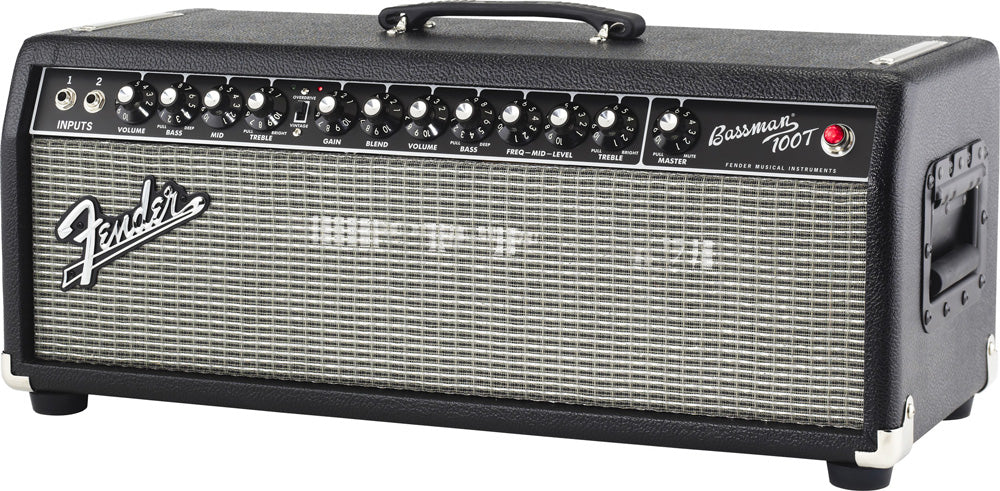When it comes to choosing a perfect bass guitar amps, one is often confused and unsure of which one to go for. With this guide, we hope you will be able to get the perfect amp you need to pick up the bass! To begin with, you need to know which kind of amp you need.
There are two types of amps – Solid State and Tube. There is a hell of a difference between the two, but you obviously figured that out! So let’s see which one fits your requirement perfectly.
Solid State – If you are looking for a high-power bass amp that won’t break the bank, a solid-state amp will probably serve your needs perfectly. Solid-state amps help musicians play loud, but once they reach their upper limits, the distortion produced is not particularly musical.

Tube – The important difference between Solid State and Tube is that, the latter is costlier than the first, a lot costlier. And they are fragile too. While Solid State helps you to produce loud sounds, Tube amps will produce a pleasing overdrive.

However, you should understand that, most quality solid-state amps are built with enough headroom to avoid overdriving them, this isn’t something you should lose your sleep over, but you should know about it. Now let’s move on to the other important aspects of the choosing a bass guitar amp.
Combo Amp or Head and Cabinet Amps?

If you are playing for small studio gigs or jamming within a closed circle, you can certainly opt for the all rounder Combo Amp, as the name suggests this amp is a combination of all the things you need. Whereas Cabinet amps are used more often because they produce more sound in a very amp/speaker combination. For large places, open air gigs and more Cabinet Amps is your best buddy usually favored by bass guitars!
Remodeling Your Amps That being said you can of course also opt for remodeling or modeling your amps. It is basically creating your own heaven in literal terms. You can go out and buy a basic “practice” amp which will help you deliver almost any tone or effect you want, and it will also work wonders as a great studio amp. These pocket-friendly models provide everything from clean tones to full-out overdrive along with all the must-have effects that bass players look for. There is no longer any need to compromise your sound, just because you’re just getting started playing guitar. Even more impressive are the “do everything” amps that are sonic chameleons. They can deliver the sounds you need, without adding something you don’t: NOISE! But today, thanks to modeling, all effects (even multi-effects such as chorus and delay plus reverb) are designed to be amazingly quiet. What’s more, modeling frees you from the constraints of having to “make do” with a particular amp’s tonal range. For some players, modeling is simply no substitute. And since a player’s individual tone is critical, we concede that each bassist will decide for himself or herself whether modeling is right for their bass amplification. Since we are already discussing about the size of the speakers, let’s pay more attention to the same. Before purchasing an amp, you need to understand –
Does size matter? Size of speakers DOES NOT matter. Modern bass cabinets support low-frequency responses in a sturdy 4x10” cabinet and let’s them handle low B-String (which produces frequencies even lower than a 42Hz E-string); something previously deemed unthinkable. However, A larger 15″ speaker will still move a room with lot of low-end rumble, so we still see a number of 1 x 15″ combo amps and cabinets, which are great for smaller gigs and practice rigs. Which size of speaker you should go for? Now that is completely an individual decision. However, you can call BAJAAO Sales Engineers to put an end to your dilemma.
When it comes to buying a bass guitar amp, there are certain things you need to keep in mind.
- There is only a slight difference between a combo amp and separate head and speaker cabinet.
- In order to reproduce the bass frequencies accurately, the speaker diameter needs to be very large and move in and out a long way. A standard guitar speaker cannot handle the amount of movement required to produce bass frequencies. This is one of the reasons why a bass cabinet must be sealed or ported. At the lowest frequencies, the speaker needs to have the air inside the box push back a little to keep it under control. The size and length of the port tube helps the speaker stay under control at even lower frequencies.
- The bigger is NOT better! Not always at least. The speakers doesn’t necessarily has have to be huge. A large speaker tends to produce a bit heavy, perhaps even “mushy” sound and several small speakers make tighter, more accurate sound.
- The power of the amplifier is really important. A 100 watt amp is perfect for practice.
- When it comes to channels, you can set up two different EQ and effects chains and easily switch between them. If internal overdrive is desired, having two gain controls are helpful to control both distortion amount and volume. EQ will be either a simple 3-knob tone control or a more sophisticated parametric or graphic EQ may be available. This applies to both combo amps and separate heads.
- Bass guitar amps are heavier than guitar amps, it would be smart to choose an amp with sturdy body and wheels for mobility. Similarly the bass amp cabinet’s construction needs to be solid, since it vibrates more than the amp itself. The cabinet needs to be thick, made of wood and capable to be handled rough!


 Used Gear
Used Gear
 Connect
Connect












